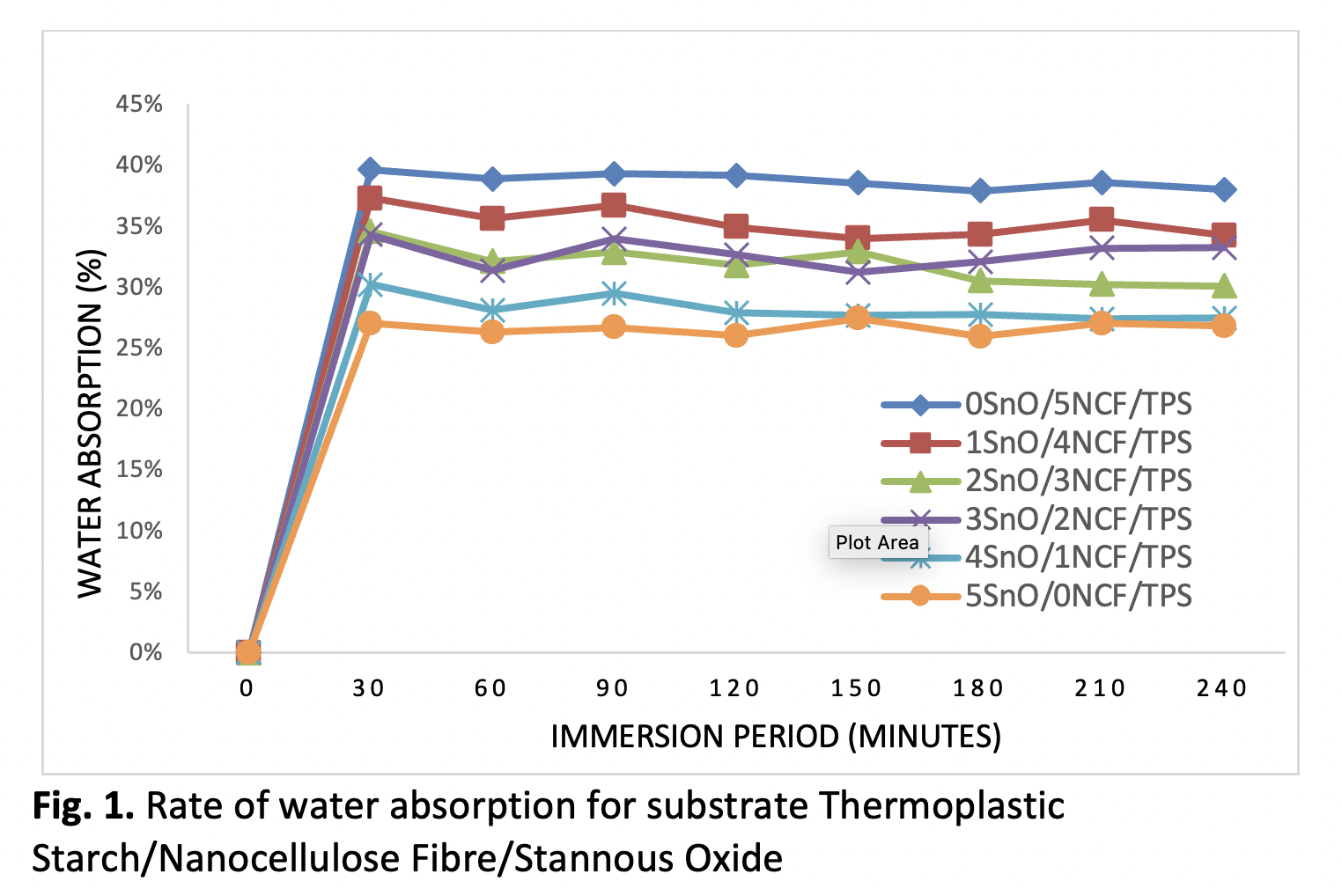Physical and Electrical Properties of Sustainable Substrate Thermoplastic Starch/Nanocellulose Fibre/Stannous Oxide
DOI:
https://doi.org/10.37934/araset.36.1.93101Keywords:
Sustainable substrate, Starch-based substrate, Conductive thin films, Nanocellulose fibre conductive compositeAbstract
Indonesia and Malaysia are prominent suppliers of oil-palm and sugar palm resources within the Southeast Asian region. The substantial starch and fibril components found in these plants hold significant potential for utilization in the industrial market as a viable alternative to polymer-based substrates. To achieve this, a series of adjustments is necessary, encompassing considerations related to physical, mechanical, and even electrical characteristics. Therefore, this research primarily focuses on conducting physical assessments, including parameters such as water absorption rates and thickness swelling. Additionally, it involves examining the morphology of the plants using field emission scanning electron microscopy (FE-SEM). Simultaneously, the electrical properties are assessed using a two-point probe method to determine the resistance and conductivity of thin films. Through this research, it was found that, the incorporation of nanocellulose-fibril (NCF) and SnO to the thermoplastic starch biofilms, the improved physical and electrical of biofilms. Among all, biofilms 4SnO/1NCF/TPS showed improved electrical properties compared to other compositions.




























